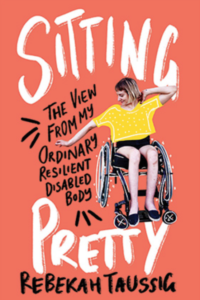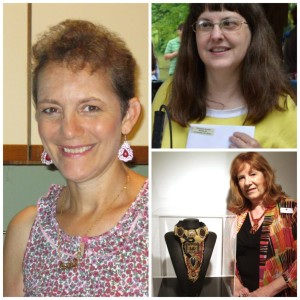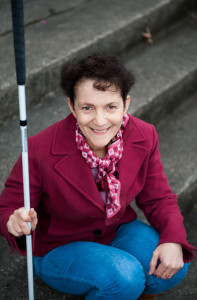
In recognition of Mental Health month this May, Jenelle and I helped facilitate “Stronger Together: Our Stories Matter”, a conference in Washington state for teens with sight loss and their families. One of my favorite parts of the weekend was the activities led by the Northwest Association of Blind Athletes (NWABA). I’ve always avoided Zumba workouts, so I was delighted to find that Zumba dance classes are actually fun and easy to follow with accessible instructions. I was also surprised by how sore my psoas muscles were the following day after some seemingly simple salsa combos. High knee core twist anyone?
They also led the youth in a game of bocce ball. My husband’s family is Italian, so I’m very familiar with the game and wondered how the players would aim for the small pallina ball, much less know which team’s ball was closest to it. NWABA’s modifications definitely reinforced my belief that humans are inherently ingenious when it comes to adaptations.
The game included a beeping pallina and a tactile map of where each ball was located in relation to the pallina. After each turn, an Orientation and Mobility Instructor could rearrange the tactile pieces in order to mimic the arrangement for any players who needed it. Bravo, NWABA!
One activity they led on the very first evening of the conference, however, spoke to me on a deeper level.
Our task was to arrange ourselves chronologically by birthday (not year, thankfully!) from one end of the hotel banquet room to the other. With over 50 participants plus several interpreters for our parents who were mono-lingual Spanish speakers, this was no small charge.
As we began to meander around the room, I noticed a young college student who was new to blindness standing still, so I asked if she wanted an arm. Ironically, we found that her birthday was right after mine, so by taking my left arm, she was already in the exact place she needed to be in the line. Once we arrived to our proper places, she continued to hold onto my arm and shared a bit of her story, which for confidentiality purposes will remain in the banquet room. I will say, however, that the experience of grief is a shared one, and vulnerability is a gift we give to one another.
When we were all arranged in a line, the person with the very first birthday in January said their birthday and so on until we reached December. I could sense the pride in the room as every single person was in proper birthday order. As each person named their birthday, rippling down the line like an ocean wave on a calm day, another wave came over me. I had trouble naming it at first. Wonder? Awe? Connection? The thought that all of the people in the room were affected by vision loss in some way rolled over me, causing me to hold my breath for a brief moment.
There were youth and some staff with vision loss, siblings, and parents, and everyone was there to support one another. We were all at different places in our journeys. Some had been born with sight loss. Others had recently lost theirs. Some sudden. Some expected. All connected.
As I reflect on this image, it occurs to me that there is a birthday line out there for all of us humans walking this journey we call life.
Have you been betrayed by a loved one? There is a birthday line for you. Are you struggling with regret? There is a birthday line for you. Do you suffer from waves of emotions that sometimes threaten to pull you under? Yes, you too have a birthday line.
A birthday line consists of all of the many humans on this planet who are, at this very moment, sharing in the struggle that you are in. The details of that struggle may vary , and the exact way our brains and bodies process the experience may differ, but the very real emotions that coincide with being human are alike. Disappointment. Anger.. Confusion. Wonder. Contemplation. Joy. And a million nuances in between.
So, DoubleVision friends, the next time you feel alone in your shame or blame or pain, picture the birthday line and feel the connection that ripples through shared humanity. No, it won’t solve your struggle, but there is a softening that occurs when we remember our common humanity.



